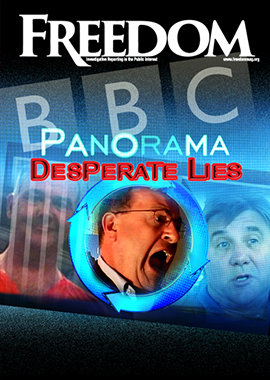He found out.
Matthew Perry paid with his life. And now it’s Plasencia’s turn to pay. After agreeing to a plea deal on June 13, the man who injected Perry at the actor’s home and in the backseat of a car, is expected to plead guilty to four drug distribution charges. Now, instead of wondering how much the “moron” will pay, he wonders how much time his plea might shave off the 40-year maximum sentence he faces for his role in the beloved Friends star’s death.
Nothing so far—not celebrity deaths, date rapes or FDA warnings—has derailed the ketamine crazy train.
Perry’s sudden and grim passing on October 28, 2023, sent shockwaves across America and put ketamine—the substance that killed him—front and center as a clear and present danger in our collective consciousness. Already notorious as a reality-twisting party drug, ketamine is one of the drugs of choice for date rape due to its capacity to restrict a victim’s ability to move or react while propelling them into a hallucinogenic haze and inducing amnesia. Ketamine is also known to cause elevated heart rate and blood pressure, nausea, vomiting, numbness, depression, hallucinations and death.
Nevertheless, the drug is wildly profitable. Though approved by the FDA only as an anesthetic, ketamine is prescribed willy-nilly for everything from soup to nuts. As one critic put it, “Any US medical provider can offer it off-label for whatever condition they want, from depression and anxiety to OCD and eating disorders, to alcoholism, drug addiction, schizophrenia, bipolar disorder, self-esteem issues, self-actualization … you name it!”
Independent ketamine “clinics” have thus mushroomed from 20 in 2019 to over 600 by the end of 2022. The sky was the limit. Profits from the drug swelled from $8.3 million in 2017 to $185 million in 2022.

Then, Matthew Perry was found dead at age 54. The world reeled, then mourned.
But did the world learn its lesson? Was Perry’s death the slap in the face that would end the orgy? Was his the necessary cautionary tale to warn those who might likewise go astray?
Evidently not.
About a year later, at the time of Plasencia’s arrest, ketamine was still flying high. In 2025, it shows no signs of slackening. MarketWatch estimates the global ketamine market will hit $3.8 billion by 2027. Grand View Research says: actually, no, make that $6.9 billion by 2030.
Meanwhile, high-tech has fed the ketamine boom with online sessions emerging as the preferred “treatment” mode. Why go out at all when you can get your fix at home? With the emerging phenomenon of telepsychiatry—coupled with FDA-approved ketamine derivatives like oral lozenges and nasal sprays—you can poison yourself and your friends with the convenience of a keyboard click.
The party roars on. After Perry’s death, Citizens Commission on Human Rights (CCHR), the nonprofit mental health watchdog, called for an investigation into the ketamine cash cow. It urged the closing of ketamine clinics as dangerously unregulated—“a wild, wild west,” as one psychotherapist put it.
“Extraordinary risks are being taken with patients’ lives when prescribing psychedelic and other psychotropic drugs that are not only unapproved but are also allowed to be mass distributed through unregulated clinics that profit from such risk-taking,” said CCHR President Jan Eastgate.
But neither the demanded investigation nor widespread clinic closures have materialized, though the FDA has issued warnings about the drug.
Nothing so far—not celebrity deaths, date rapes or FDA warnings—has derailed the ketamine crazy train. Some even flaunt their ketamine habits, urging others to join the toxic orgy.
Of course, psychiatrists couldn’t care less; with them, profit comes first, people last. Their industry is engaged in a pivot from antidepressants to ketamine and other psychedelics, which psychiatrists are touting as the next miracle cure in yet another gold rush disguised as “healing.” They’re pushing so hard, in fact, that they shamelessly submitted falsified clinical trials to the FDA as “proof” that psychedelics aren’t just a deadly party drug—they can cure people of everything, including life itself.
Meanwhile, five individuals responsible for another individual’s death by ketamine await their fate.
Dr. Plasencia called his victim a “moron,” a chilling reflection of the cold contempt people like him hold for those who trust them with their lives.
Now, he’s headed to prison. His victim lies cold and dead.
That, too, is a reflection.
If the ketamine craze isn’t stopped, there will be countless more Dr. Plasencias—“healers” who trade what compassion they may have had for a few pieces of silver, leaving shattered lives in their wake. Some may end up behind bars, but many victims won’t get justice.
They’ll just end up buried.






















